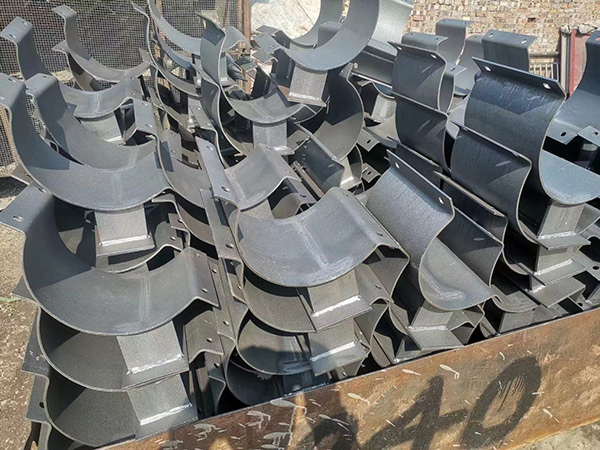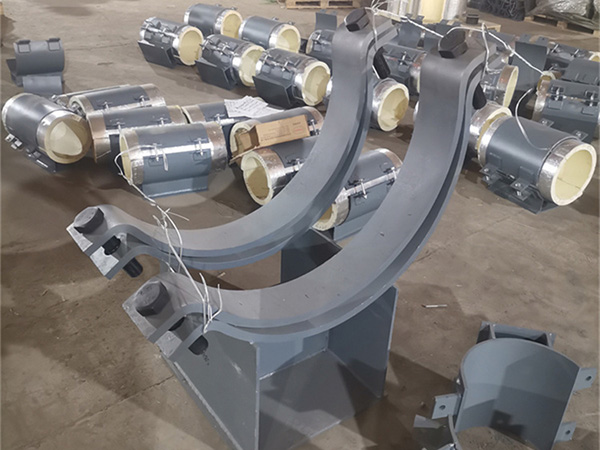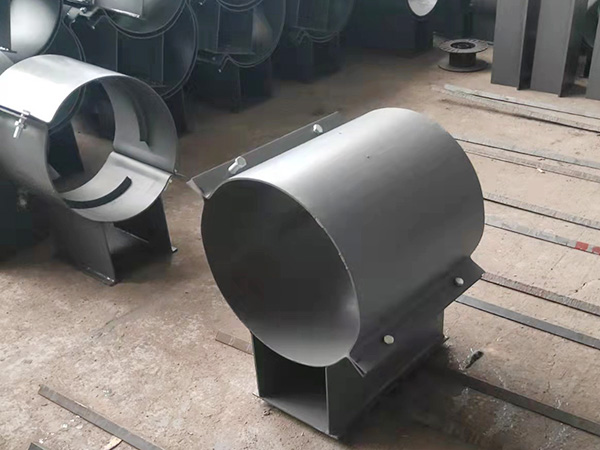Emerging Innovations in Pipe Insulation Bracket Design and Engineering
Author:Mingde Time:2025-08-29 19:53:37 Click:57
In today’s industrial and construction landscapes, pipe support systems are undergoing a quiet revolution. Far from being simple metal fixtures, these systems — particularly insulation brackets — now combine engineering precision with advanced material science to improve safety, efficiency, and environmental performance.
The role of insulation brackets extends well beyond holding pipes in place. They protect thermal integrity, reduce energy loss, and contribute to the long-term stability of entire piping networks.


Why Pipe Support Systems Are a Cornerstone of Reliable Infrastructure
Piping is the circulatory system of modern facilities, and pipe support systems are the skeleton that keeps it stable. Well-designed supports manage mechanical loads, limit vibration, and accommodate thermal expansion and contraction.
When insulation is involved, brackets must also prevent compression or deformation of the insulating layer, which can otherwise compromise thermal efficiency and lead to costly operational losses.
Material Science Advancements in Insulation Brackets
The search for durability and performance has driven rapid change in bracket materials:
·Advanced Composites: Lightweight yet strong, resistant to both corrosion and extreme temperatures.
·Engineered Polymers: Non-conductive and impact-resistant, reducing thermal bridging.
·Hybrid Structures: Pairing metallic strength with insulating layers to balance load-bearing capacity and energy conservation.
These innovations extend service life while minimizing maintenance, making them essential in next-generation pipe support systems.
Rethinking Bracket Geometry and Functionality
Modern insulation bracket design is benefiting from powerful computational tools such as finite element analysis. By simulating real-world loads, designers can fine-tune geometry for optimal stress distribution and vibration damping.
Recent design approaches include:
·Brackets with integrated insulation saddles for enhanced thermal protection.
·Modular assemblies allowing quick on-site configuration.
·Adjustable designs that simplify alignment during installation.
These refinements save installation time, improve system reliability, and support the versatility required in diverse piping environments.
Smart Technology Integration in Pipe Support Systems
The rise of smart infrastructure has reached pipe support systems. Embedding sensors into brackets allows continuous monitoring of strain, temperature, and vibration.
Real-time data collection supports predictive maintenance — identifying problems before they escalate. This is especially valuable in critical facilities where even brief downtime can be costly.
Designing for Sustainability and Energy Conservation
With stricter energy and environmental regulations, sustainability has become a primary design driver. Today’s pipe support systems are being engineered to:
·Minimize material use without compromising strength.
·Incorporate recyclable or low-impact materials.
·Reduce thermal bridging to improve insulation efficiency.
These measures not only help facilities meet compliance requirements but also lower operational costs through improved energy conservation.


Future Pathways for Pipe Support Systems
Looking forward, the evolution of pipe support systems will likely focus on:
·Broader adoption of additive manufacturing for custom-fit components.
·Integration with digital twin models for lifecycle analysis.
·Expanded use of sensor networks for automated health monitoring.
This convergence of material science, digital engineering, and sustainability promises to redefine how piping systems are supported and maintained.
Final Thoughts: Strengthening the Role of Pipe Support Systems
From advanced composites to sensor-enabled monitoring, pipe support systems have evolved into intelligent, high-performance components that protect both physical infrastructure and operational efficiency.
Staying ahead of these innovations ensures that piping networks remain reliable, efficient, and sustainable for years to come. By investing in modern pipe support systems, engineers and facility managers are building not just for today’s demands, but for the challenges of the future.
References
GB/T 7714:Chen J, Wang H, Salemi M, et al. Finite element analysis of composite repair for damaged steel pipeline[J]. Coatings, 2021, 11(3): 301.
MLA:Chen, Jiaqi, et al. "Finite element analysis of composite repair for damaged steel pipeline." Coatings 11.3 (2021): 301.
APA:Chen, J., Wang, H., Salemi, M., & Balaguru, P. N. (2021). Finite element analysis of composite repair for damaged steel pipeline. Coatings, 11(3), 301.
 Hot Products
Hot Products
 Contact Us
Contact Us
Contact:
Mobile:+86 +86 19133378808
Website:mingdepipe.com
Address:









